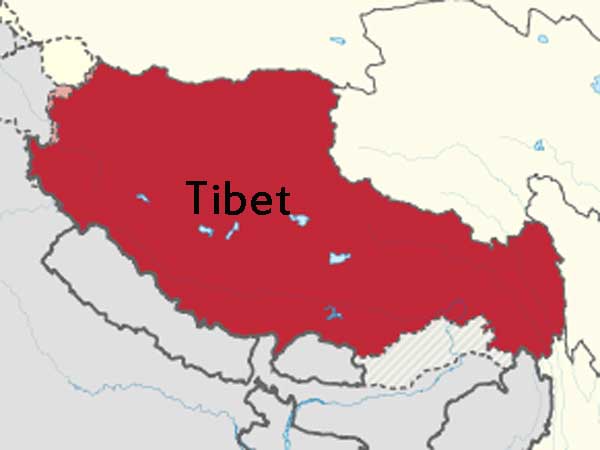
Tibetans inherit 'super athlete' gene to live at high altitude

This is the first time a gene from another species of human has been shown unequivocally to have helped modern humans adapt to their environment, researchers said. An unusual variant of a gene involved in regulating the body's production of hemoglobin became widespread in Tibetans after they moved onto the high-altitude plateau several thousand years ago. This variant allowed them to survive despite low oxygen levels at elevations of 15,000 feet or more, whereas most people develop thick blood at high altitudes, leading to cardiovascular problems.
"We have very clear evidence that this version of the gene came from Denisovans," a mysterious human relative that went extinct 40,000-50,000 years ago under pressure from modern humans, said principal author Rasmus Nielsen, a University of California, Berkeley professor.
"This shows very clearly and directly that humans evolved and adapted to new environments by getting their genes from another species," said Nielsen. The gene, called EPAS1, is activated when oxygen levels in the blood drop, triggering production of more hemoglobin. The gene has been referred to as the "superathlete" gene because at low elevations, some variants of it help athletes quickly boost hemoglobin and thus the oxygen-carrying capacity of their blood, upping endurance.
At high altitudes, however, the common variants of the gene boost hemoglobin and its carrier, red blood cells, too much, increasing the thickness of the blood and leading to hypertension and heart attacks as well as other conditions. The variant, or allele, found in Tibetans raises hemoglobin and red blood cell levels only slightly at high elevations, avoiding the side effects seen in most people who relocate to elevations above 13,000 feet.
"We found that part of the EPAS1 gene in Tibetans is almost identical to the gene in Denisovans and very different from all other humans," Nielsen said. The researchers first reported the prevalence of a high-altitude version of EPAS1 in Tibetans in 2010, based on the sequencing of the genomes of Han Chinese and Tibetans. Nielsen and his colleagues argued that this prevalence was the result of natural selection to adapt to about 40 per cent lower oxygen levels on the Tibetan plateau.
That is, people without the variant died before reproducing at a much higher rate than those with it. About 87 per cent of Tibetans now have the high-altitude version, compared to only 9 per cent of Han Chinese, who have the same common ancestor as Tibetans. Nielsen and his colleagues sequenced the EPAS1 gene in an additional 40 Tibetans and 40 Han Chinese. The data revealed that the high-altitude variant of EPAS1 is so unusual that it could only have come from Denisovans. The finding was published in the journal Nature.
PTI


 Click it and Unblock the Notifications
Click it and Unblock the Notifications

































